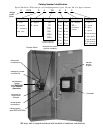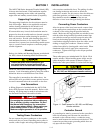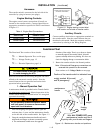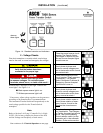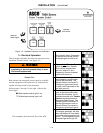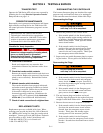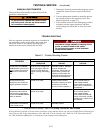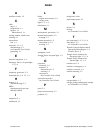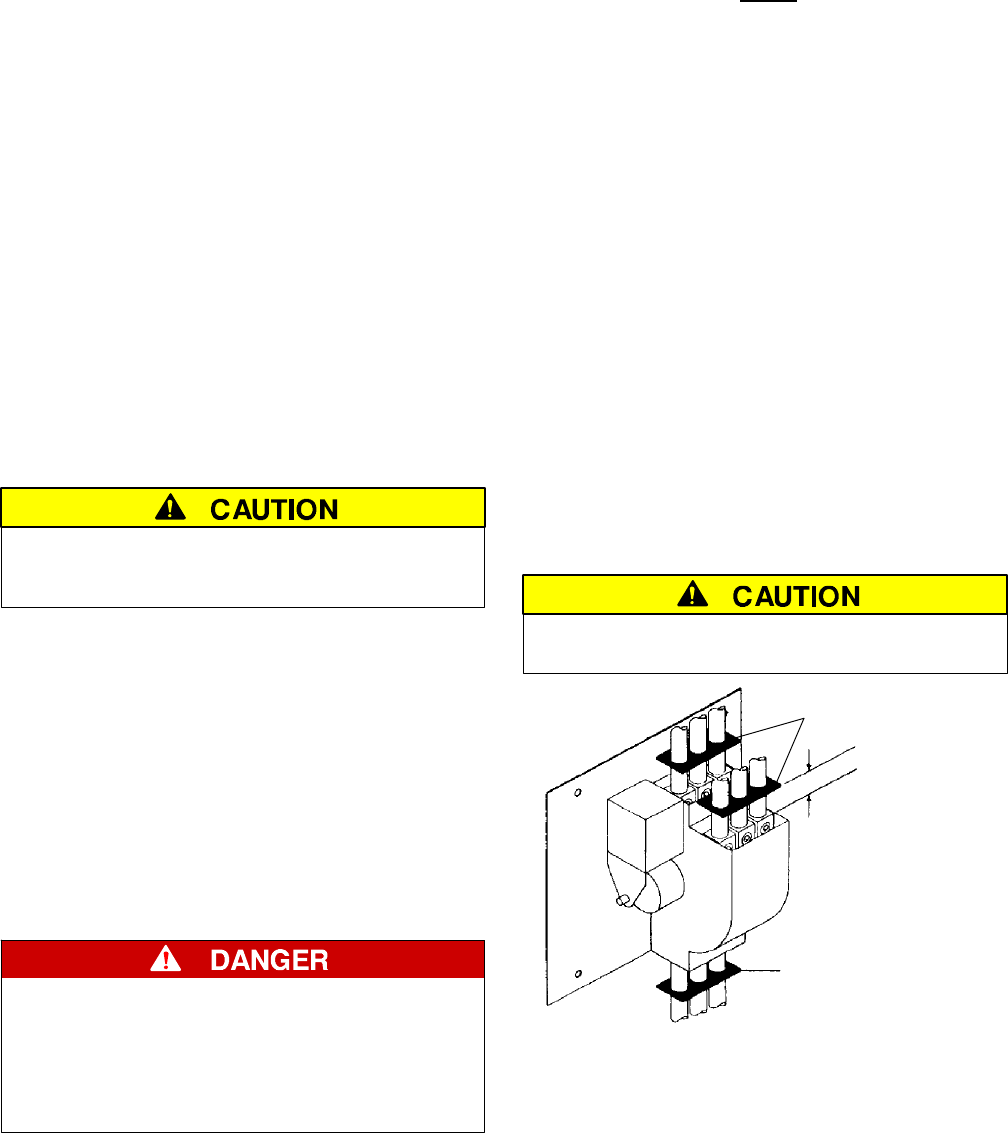
SECTION 1 INSTALLATION
1 --- 1
The ASCO 7000 Series A utomatic Transfer Switch (ATS)
is factory wired and tested. Field install ation requires
mounting, connecting service cables, and connecting
engin e start and auxiliary control circu its (if required ).
Supporting Foundation
The supporting foundation for the enclosure must be
level and straight. Refer to the applicable enclosure
outline drawing included with the switch for all
mounting de tails including door opening space.
If bottom cable entry i s used, the foundation must be
prepared so that the conduit stubs are located correctly.
Refer to the enclosure outline drawing for specified
area and location. Provide cable bending space and ½
inch minimum clearance to live metal parts. When a
concrete floor is poured, use interlocking conduit spacer
caps or a wood or metal template t o maintain proper
conduit alignment.
Mounting
Refer to the Outline and Mounting Diagram provided with
the ATS; it show s all mountin g details and instruc tion s.
Protect the switch from construction grit
and metal chips to prevent malfunction or
shortened life of the automatic switch switch.
Moun t the AS CO ATS vertica l ly to a rig id suppo r tin g
structure. Level all mounting points by using flat washers
behind the holes to avoid distortion of the switc h .
The controller is mounted on the cabinet door. An
add-on DIN rail is provided for some optional accesso-
ries and is mounted below the controller on the door.
Line Connections
A Wiring Diagram is furnished with the ASCO 7000
Series ATS (separa te from this manual). Refer to this
drawing. All wiring must be made in accordance with
the National Electrical Code and local codes.
De–energize the conductors before making any
line or auxiliary circui try connections. Be sure
that Normal and E mergency line connections
are in proper phase rotation. Place engine gen-
erator starting control i n the OFF position.
Make sure engine generator i s not in operation.
Testing Power Conductors
Do not connect the power conductors to the t ransfer
switch until they are tested. Installing power cables in
conduit, cable troughs and ceiling-suspended hangers
often requires considerable force. The pulling of cables
can damage insulation and stretch or break the
conductor’s strands. For this reason, after the cables are
pulled into position, and before they are connected,
they should be tested to verify that they are not
defectiveorhavebeendamagedduringinstallation.
Connecting Power Conductors
After the power cables have been tested, connect them
to the appropriate terminal lugs on the transfer switch
as shown on the wiring diagram provided with the
switch. Makesurethelugsprovidedaresuitableforuse
with the cables being installed. Standard terminal lugs
are solderless screw t ype and will accept the wire sizes
listed on the drawings provided with the switch. Be
careful when stripping insulation from the cables; avoid
nicking or ringing the conductor. Remove surface
oxides from cables by cleaning with a wire brush. When
aluminum cable is used, apply joint compound to
conductors. Tighten cable lugs to the torque specified
on rating label.
Three cable spacers are included with 150, 200, & 230 A
transfer switches. When installing power cables, run the
cables through the cable spacers as shown in Figure 1-1.
Po sition the cable spacers within 1½ inches from the lugs.
The cable spacers must be located as shown
for 150, 200, and 230 ampere transfer switches.
cable spacer
cable spacers
1 ½ inch approximate
Figure 1-1. Cable spacer for 150, 200, and 230 amp.
transfer switches.
Controller Ground
A grounding wire must be connected to the controller’s
lower left mounting stud. Because the controller is
mounted on the enclosure door, a conductive strap
must be used between the enclosure and the door. This
connection provides proper grounding which does not
rely upon the door hinges.




